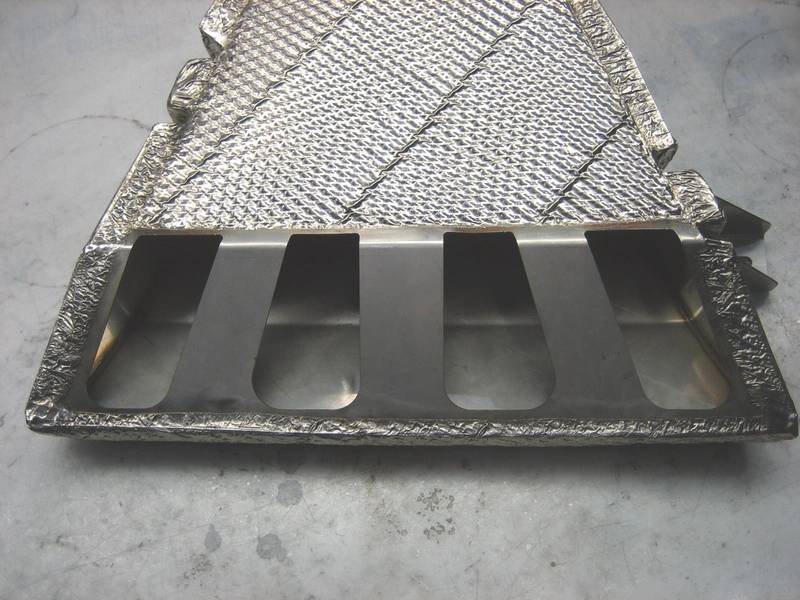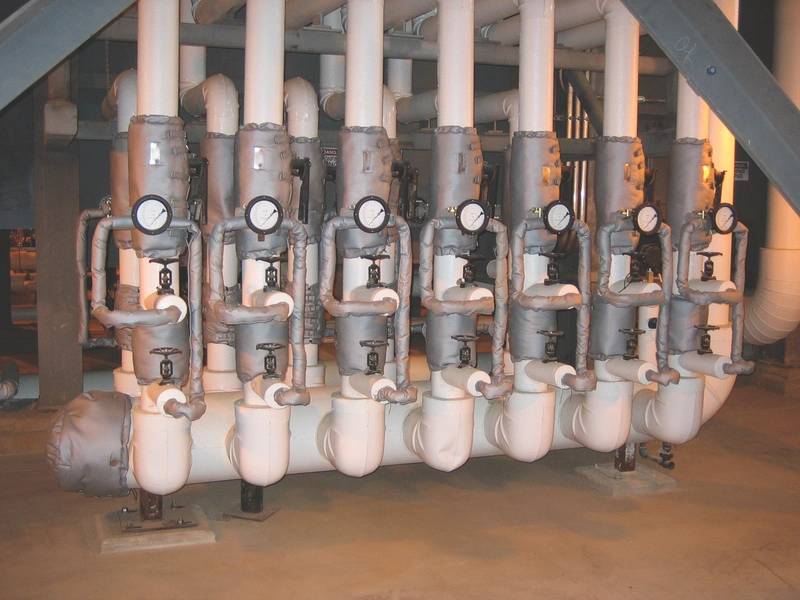Why Should I Care About Thermal Insulation?
Compliance, Safety, Insurance, Emissions & Maintenance
There are a million important things to worry about on any vessel, so why does high-performance thermal insulation deserve a place on the list? Answer: Because it has a very important role to play in keeping your vessel out on the water, being operated safely by a crew and safely carrying passengers.
What is High-performance Thermal Insulation?
When we talk about high-performance thermal insulation, we’re talking about insulation that can stop a significant amount of heat, in a relatively small space. Not the stuff that sits in between your drywall at home, but insulation made from sheet metal, metal foil, high-performance fabrics and composites that manage heat around exhaust and after-treatment systems, turbo chargers, high-pressure oil and hydraulic lines and other high-heat areas on a vessel.
So, now that we know what it is, why should you care about it?
Thermal Insulation, SOLAS and Safety
SOLAS and safety go hand in hand. SOLAS regulations are there to keep your crew and passengers safe. And, of course, failing a SOLAS spot-check could mean getting stuck in port. The first area where thermal insulation is critical to SOLAS compliance is fire prevention. SOLAS calls for insulating any hot surfaces that could come into contact with fuel, as well as protecting fuel and oil lines against failure. Practically, this typically means insulating engine turbochargers and exhaust and after-treatment systems, as well as shielding fuel and oil line connection and joints, and double-walled piping for high-pressure fuel and oil lines.
Another area SOLAS specifically addresses is noise, requiring compliance with the Maritime Safety Committee’s resolution MSC.337(91). This resolution prescribes acceptable noise levels for different parts of a vessel, such as machinery spaces, control rooms and other working spaces. High-performance thermal insulation not only insulates against heat, it can be designed and implemented to significantly decrease the noise emitted by engines and other mechanical systems.
One area that SOLAS doesn’t address specifically, but which we recommend considering, is safe-touch temperatures. SOLAS only requires insulating surfaces against fire danger if they reach above 220°C, but ASTM C1055 recommends keeping exposed surfaces that workers might come into contact with at or below 60°C. Many process engineers recommend 48°C as a more reasonable safe-to-touch temperature.
Typically, insulating engine components and exhaust systems to maintain safe-to-touch temperatures is impractical, and workers won’t come into contact with these surfaces while they’re at operating temperatures under standard maintenance procedures. However, if your vessel has high-temperature equipment in areas where workers could accidentally come into contact with it, such as hot water pipes, valves or other components, it is well worth implementing a thermal insulation solution that considers safe-to-touch temperatures.
Thermal Insulation & Insurance
It should be no surprise that, given thermal insulation’s role in safety, it’s also something that could be of great importance to your insurer. We were recently contacted by a company who was at risk of a significant insurance rate increase. They had experienced several fires caused by flammable materials coming into contact with exhaust components. Their insurer gave them a mandate: Fix the problem, or take a rate hike.
Thermal Structures was able to help them develop a thermal insulation solution that reduced the risk of fires, improved safety, reduced downtime and made their insurer happy. Thermal insulation has so many safety benefits that, even if you haven’t experienced any problems, it’s worth talking with your insurer to see if implementing more comprehensive thermal insulation could help to reduce your rates.
Thermal Insulation & Emissions
Whether you’re simply subject to the International Marine Organization’s (IMO) global marine engine regulations, or the more stringent Emission Control Area (ECA) regulations, thermal insulation plays a critical role in helping to meet those requirements. Meeting emissions standards often goes hand in hand with the generation of additional heat. Sometimes that heat is an essential part of the process, like with Diesel Particulate Filter (DPF) regeneration. Other times, it’s simply a byproduct. In either case, when engines are producing more heat, they need more effective thermal insulation.
Today, that’s largely relevant to compliance with IMO emissions standards, but it’s likely that, in the future, reducing emissions could become a source of profit. The EU and other organizations have already proposed “cap and trade” style programs for maritime emissions, where lower emissions producers would be able to sell their excess capacity to higher emissions producers. Vessels and fleets that have taken strides toward lowering emissions today will be well positioned to take advantage of those programs when they come into place.
Thermal Insulation & Maintenance
The type of thermal insulation on your vessel can have a big impact on how easy or difficult it is to perform maintenance on systems covered by that insulation. Many times, thermal insulation has to be removed to perform maintenance on the system it’s protecting. If thermal insulation is poorly designed or implemented, it can cause a significant and costly obstacle to that maintenance.
There’s no one-size-fits-all answer in picking the right thermal insulation, so it’s important to consider several factors. For example, fabric insulation blankets typically have a lower initial cost, but over time they can “cure” into shape, and removing them can cause them to disintegrate. Foil and sheet metal insulation might have a higher initial cost, but they can be removed and reattached for the life of the engine without being damaged.
Cleaning is also an important consideration. On many vessels, surfaces that could become contaminated with oil, fuel or other flammable chemicals are frequently cleaned. Sheet metal and foil insulation can stand up to rigorous cleaning and even pressure-washing without any issues, but fabric insulation could present a problem. Picking the right thermal insulation can have a big impact on the ongoing cost and ease or difficulty of your vessel’s maintenance.
Getting Help
The implementation of thermal insulation can be a lot to think about, and there’s no need to go it alone. Your best bet is to work closely with your engine manufacturer, or a thermal insulation provider, to make sure that your vessel or fleet is using appropriate, suitable and effective thermal insulation. It’s the first step in making sure your vessels are as safe, efficient and easy to maintain as possible.
The Author
Bruce Kaplan is Product Development Manager at Thermal Structures, Inc.
(As published in the September 2016 edition of Marine News)


